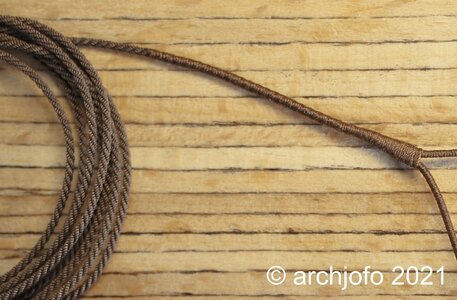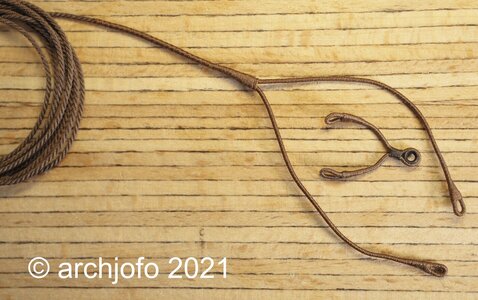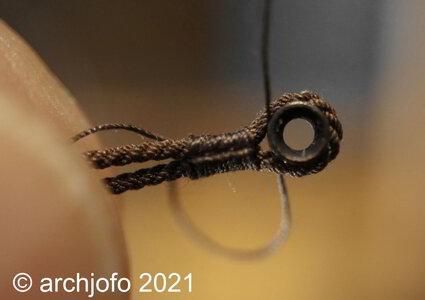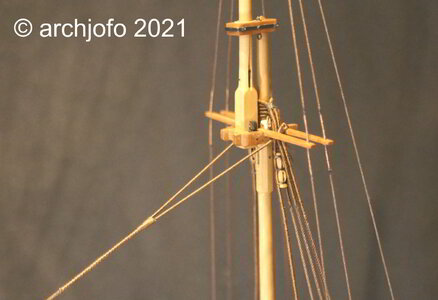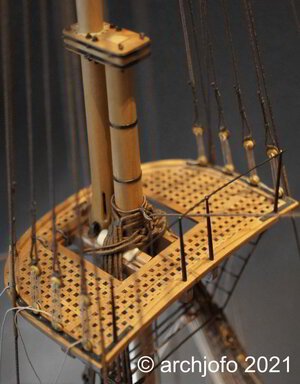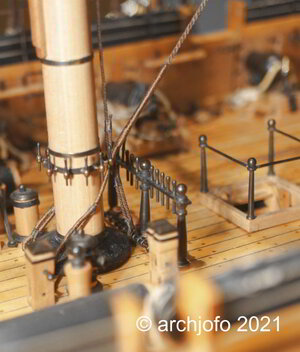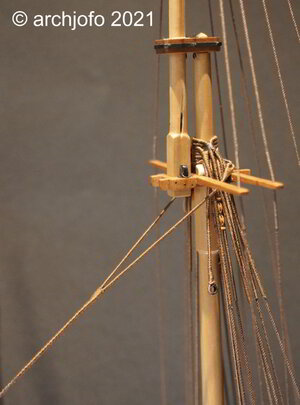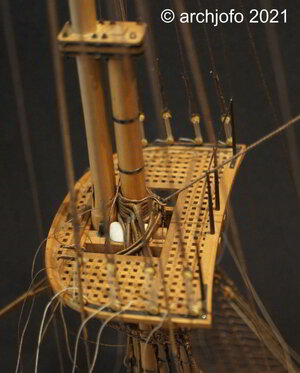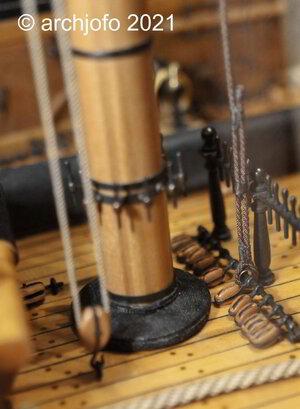Did you purchase the hooks and brass strapping? Your results with those are incredible.
Jan
Jan
Last edited:
 |
As a way to introduce our brass coins to the community, we will raffle off a free coin during the month of August. Follow link ABOVE for instructions for entering. |
 |
 |
The beloved Ships in Scale Magazine is back and charting a new course for 2026! Discover new skills, new techniques, and new inspirations in every issue. NOTE THAT OUR FIRST ISSUE WILL BE JAN/FEB 2026 |
 |

Those hooks and fittings really set off your work.Hi Jan,
First of all, thank you for the nice comment.
For the hooks I made master models from brass and then had them cast by a jewellery foundry using the lost wax process.
I had the brass fittings for the blocks etched from sheet brass according to the patterns I had drawn.
So in this respect I made everything myself.

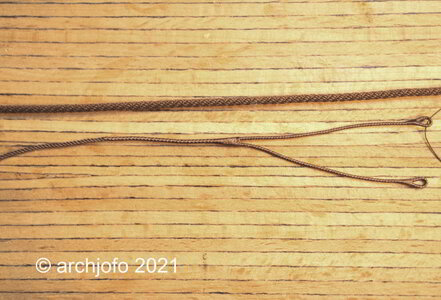
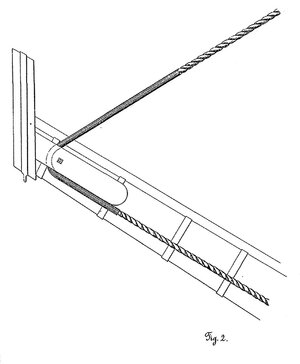
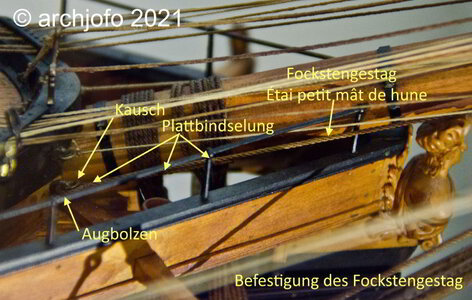
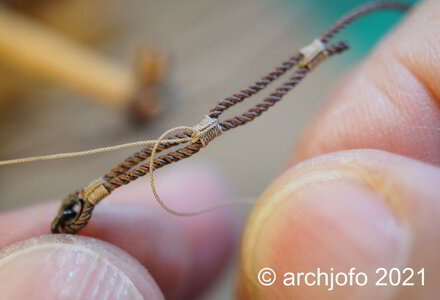
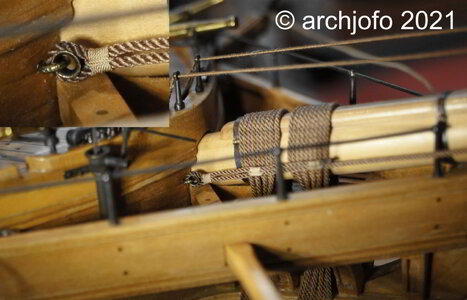
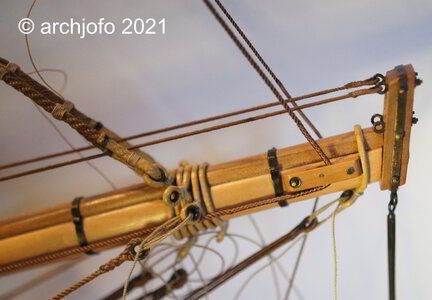
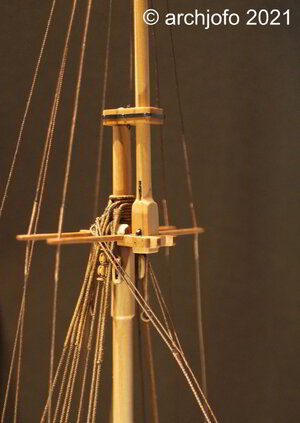

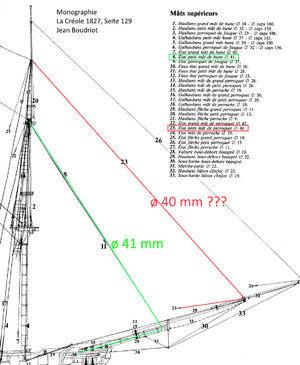
41/48 = 0,85 mmMerhaba,
ve işte devam ediyor:
Öne çıkan cesur konaklama - Étai petit mât de perroquet
Önde gelen cesur duruşu yapmaya hazırlanırken, aşağıdaki sorunun açıklığa kavuşturulması gerekiyor ve uzman yardımınızın bunu netleştirmesini umuyorum:
La Créole monografında, sadece arma planına genel bakışta değil, aynı zamanda metinde de, öndeki cesur duruş için 40 mm'lik bir çap verilmiştir.
Ön direği desteği 41 mm'lik bir çapa sahiptir. Bu açıdan, 40 mm çapındaki ön gabari direği bana çok kalın geliyor. Bence kalmak olmalı
çok daha ince, belki de yaklaşık 19 mm çapında olabilir.
Sen ne düşünüyorsun?
View attachment 244820
I agree - 40mm is way too thick. Somewhere between 19 and 25? Gorgeous work as always. Many thanks for sharing, Johann.Hello,
and here it goes on:
Fore topgallant stay - Étai petit mât de perroquet
In preparing to make the fore topgallant stay, the following question needs clarification and I hope for your expert assistance to clarify it:
In the monograph for La Créole, a diameter of 40 mm is given for the fore topgallant stay, not only in the overview with rigging plan but also in the text.
The fore topmast stay has a diameter of 41 mm. In this respect, the fore topgallant stay with a diameter of 40 mm seems to me to be much too thick. In my opinion, the stay should be
be much thinner, perhaps around 19 mm in diameter.
What do you think?
View attachment 244820

bu doğru yönHerkese merhaba, iplerin sağa veya sola dönmesi ile ilgili teknik bir sorum var. Bir kez sağa ve diğer kez sola döndürüldüklerinin arka planı nedir? Bunun teknik bir düşüncesi var mı yoksa sadece mükemmel/orijinal replikanın bir yönü mü yoksa hangi halatçıdan alındığına bağlı mı? Umarım şimdi kendimi açıkça ifade edebilmişimdir.


